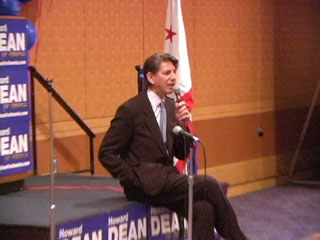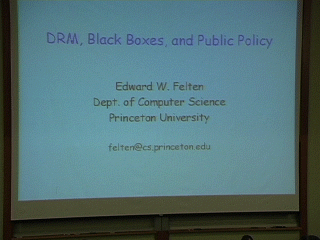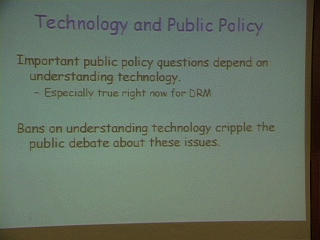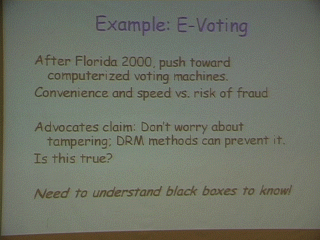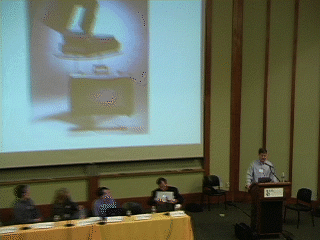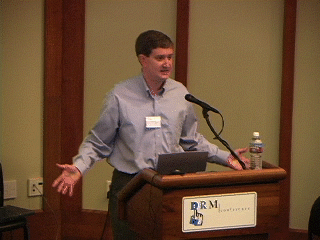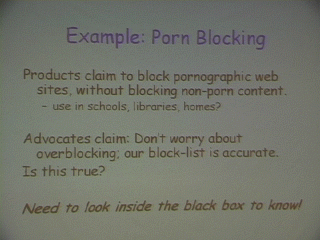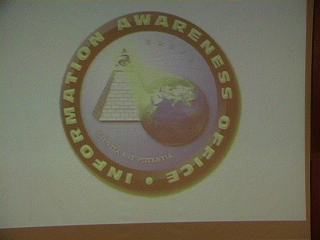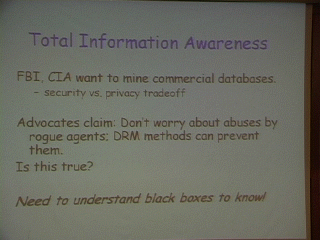It’s very important to keep our eye on the prize guys: a new democratically-elected President in 2004.
That may mean the end of computer voting in some areas — NOT its introduction into new jurisdictions.
Unless these machines are required to be open source, so that third parties could verify their numbers. I believe open source voting machines are the only way that computer voting can move forward towards producing any kind of reliable results. What do you guys think?
New Voting Systems Assailed — Computer Experts Cite Fraud Potential
By Dan Keating for the Washington Post.
Critics of such systems say that they are vulnerable to tampering, to human error and to computer malfunctions — and that they lack the most obvious protection, a separate, paper receipt that a voter can confirm after voting and that can be recounted if problems are suspected.
Officials who have worked with touch-screen systems say these concerns are unfounded and, in certain cases, somewhat paranoid.
David Dill, the Stanford University professor of computer science who launched the petition drive, said, “What people have learned repeatedly, the hard way, is that the prudent practice — if you want to escape with your data intact — is what other people would perceive as paranoia.”
Other computer scientists, including Rebecca Mercuri of Bryn Mawr College, say that problems are so likely that they are virtually guaranteed to occur — and already have.
Mercuri, who has studied voting security for more than a decade, points to a November 2000 election in South Brunswick, N.J., in which touch-screen equipment manufactured by Sequoia Voting Systems was used.
In a race in which voters could pick two candidates from a pair of Republicans and a pair of Democrats, one machine recorded a vote pattern that was out of sync with the pattern recorded elsewhere — no votes whatsoever for one Republican and one Democrat. Sequoia said at the time that no votes were lost — they were just never registered. Local officials said it didn’t matter whether the fault was the voters’ or the machine’s, the expected votes were gone.
In October, election officials in Raleigh, N.C., discovered that early voters had to try several times to record their votes on iVotronic touch screens from Election Systems and Software. Told of the problems, officials compared the number of voters to the number of votes counted and realized that 294 votes had apparently been lost.
When Georgia debuted 22,000 Diebold touch screens last fall, some people touched one candidate’s name on the screen and saw another candidate’s name appear as their choice. Voters who were paying attention had a chance to correct the error before finalizing their vote, but those who weren’t did not.
Chris Rigall, spokesman for the secretary of state’s office, said that the machines were quickly replaced, but that there was no way of knowing how many votes were incorrectly counted.
In September in Florida, Miami-Dade and Broward counties had a different kind of vote loss with ES&S touch-screen equipment: At the end of the day, precincts that reported hundreds of voters also listed virtually no votes counted. In that case, technicians were able to retrieve the votes from the machines.
“If the only way you know that it’s working incorrectly is when there’s four votes instead of 1,200 votes, then how do you know that if it’s 1,100 votes instead of 1,200 votes? You’ll never know,” said Mercuri.
Because humans are imperfect and computers are complicated, said Ben Bederson, a professor of computer science at the University of Maryland, mistakes will always be made. With no backup to test, the scientists say, mistakes will go undetected.
“I’m not concerned about elections that are a mess,” Dill said. “I’m concerned about elections that appear to go smoothly, and no one knows that it was all messed up inside the machine.”
…if customers want receipts, he said, his company will supply them. And Williams said receipts may have a place in the system. “The advantage of a hard piece of paper — one that a voter would hold in his hand and say, ‘That is who I voted for’ — that is psychological, and there certainly is value to that. We need public confidence in our elections,” he said.
Similarly, the official overseeing Maryland’s program would accept paper if it were available.
“I’ve been doing voting systems for 15 years,” Torre said. “I don’t care if they give voters a piece of paper or not. If they come out with a receipt, that’s fine. Maybe with the momentum out of California, we’ll have receipts before too long.”
Continue reading →
